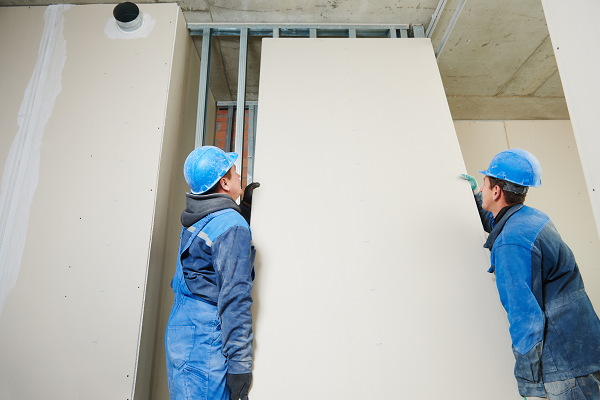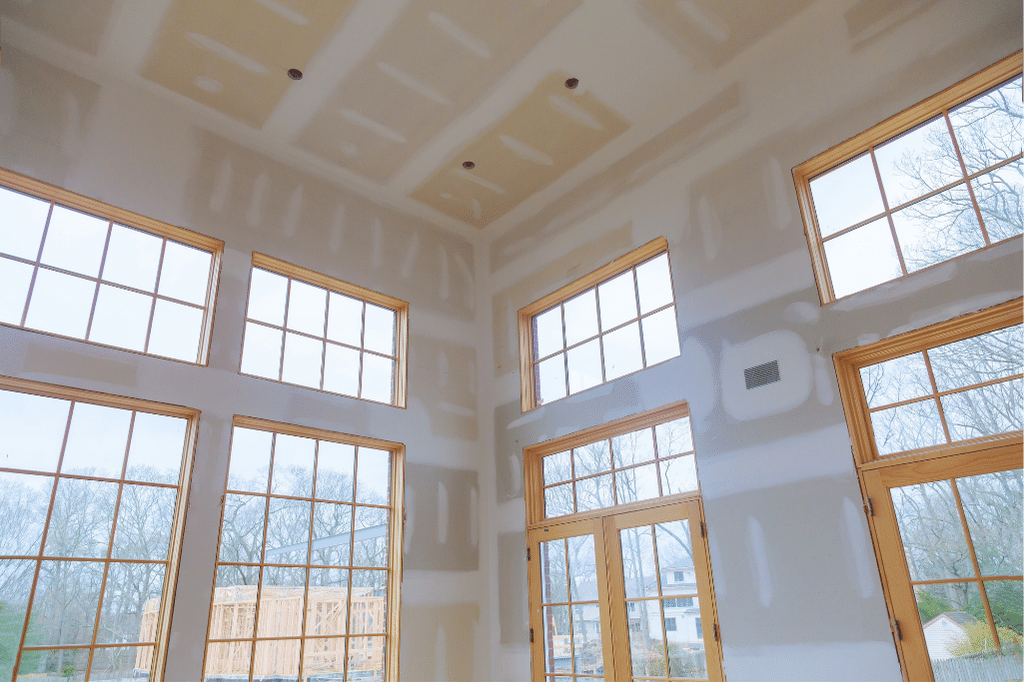Extraordinary Sheetrock Repair Fort Worth to Boost Your Home
Extraordinary Sheetrock Repair Fort Worth to Boost Your Home
Blog Article
Drywall Installment Made Easy: Tips for Perfect Results
Drywall installation is typically viewed as a complicated job, yet with the best method and knowledge, it can become a convenient undertaking. Choosing quality materials and preparing the installment area are important primary steps that establish the foundation for success. Furthermore, understanding methods for cutting, hanging, and ending up drywall can significantly influence the result. As we check out these vital tips, you might find that also the smallest changes in your method can lead to incredibly improved outcomes, leaving you to consider just how these practices can change your next job.
Choosing the Right Materials
Picking the appropriate materials for drywall installment is essential to accomplishing a sturdy and visually pleasing finish. drywall contractor. The main part, drywall sheets, typically been available in different densities, with 1/2-inch sheets being standard for interior walls. For locations calling for added moisture resistance, such as restrooms or kitchen areas, consider using green board or cement board, which are specifically created to hold up against moisture

Additionally, selecting the right bolts-- either nails or screws-- is crucial for safeguarding the drywall to the framework. Drywall screws are normally favored for their holding power and decreased risk of standing out. Last but not least, take into consideration the complements such as primer and paint, which not only boost the appearance but also shield the drywall from dampness and wear.
Preparing the Installment Location
Before starting the drywall installation procedure, it is important to prepare the installment area completely. A tidy office lessens the risk of damage to existing things and allows for effective activity during setup.
Following, inspect the walls and ceiling for any kind of imperfections, such as fractures, openings, or mold and mildew. Address these issues in advance; spot any kind of damages and enable enough time for repairs to dry. Furthermore, make certain that electrical outlets, buttons, and plumbing are appropriately positioned and made up, as this will certainly influence drywall placement.
Take into consideration the ecological conditions also. A steady temperature and humidity level are important for optimal adhesion and efficiency of the drywall materials. If necessary, use a dehumidifier or heater to produce appropriate problems.
Trimming and Hanging Drywall
The trick to effective drywall setup depends on the accurate cutting and hanging of the panels. Begin by gauging the room precisely, taking into consideration any obstructions such as electric outlets or home windows. Use a straight edge and an energy knife to score the drywall along your dimensions, after that snap it along the racked up line for a tidy break. For more intricate cuts, such as around electrical outlets, a drywall saw can be used for precision.

Constantly work from the top down and delegated right, ensuring that you preserve a staggered pattern to boost stability. Appropriately hanging the drywall establishes the foundation for a smooth surface, inevitably leading to remarkable lead to your drywall job.
Insulation and Mudding Techniques
While appropriate cutting and dangling of drywall establishes the stage, the following important step involves mastering taping and mudding strategies to make certain a seamless coating. Taping is vital for enhancing joints and preventing cracks; it includes installing tape right into the used joint substance (mud) Beginning with a quality fiberglass or paper tape, applying the tape over the joint and pressing it into the wet mud utilizing a taping blade, making certain no air bubbles continue to be.
Once the tape is in place, apply a thin layer of joint compound over the tape, feathering the edges to create a smooth transition to the drywall surface. Allow this layer to dry completely before sanding it lightly to you could try this out remove imperfections. Repeat this process, applying added layers of mud as essential-- typically two to three layers-- Visit Your URL while progressively expanding the application location with each layer to attain a smooth appearance.
After the final coat dries, sand the surface area with a fine-grit sandpaper till smooth. drywall installation. Remember to wear a mask throughout fining sand to prevent inhaling dust particles. Mastering these taping and mudding strategies is crucial for achieving a professional-quality coating in your drywall installment
Completing Touches for Perfection
Achieving a remarkable drywall installment surpasses taping and mudding; it culminates in the ending up touches that raise the overall look. These last steps are crucial in ensuring a professional-grade coating that improves the aesthetic appeals of your space.
Begin by sanding the dried out joint compound to develop a smooth surface. Use a fine-grit sandpaper and a fining sand block or pole sander for optimum control. Pay specific focus to edges and edges, as these areas have a tendency to require even more precise job. After sanding, clean down the walls with a wet fabric to remove any type of dust bits, ensuring a tidy surface for painting.
Following, apply a primer especially created for drywall. This step is essential, as it assists click seal the joint substance and offers a consistent base for the overcoat. When the guide dries, check for any kind of imperfections, and repair as needed.
Final Thought
In final thought, effective drywall setup pivots on the cautious choice of products, complete prep work of the setup location, and exact implementation of cutting and hanging methods. Mastery of taping and mudding processes is important for achieving a smooth finish.
Drywall installation is frequently perceived as a challenging task, yet with the right approach and knowledge, it can come to be a convenient venture.Choosing the suitable materials for drywall installment is critical to attaining a long lasting and visually pleasing finish.Prior to starting the drywall setup process, it is essential to prepare the installment location thoroughly. Understanding these taping and mudding strategies is important for accomplishing a professional-quality finish in your drywall installment.
In final thought, successful drywall installment hinges on the careful choice of materials, thorough prep work of the installment location, and exact execution of reducing and hanging techniques.
Report this page